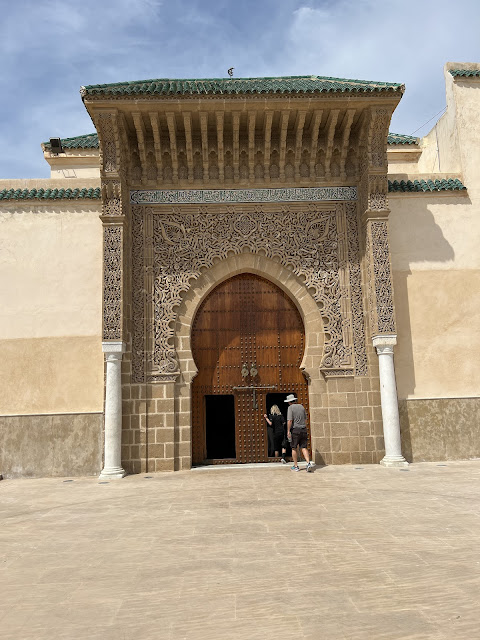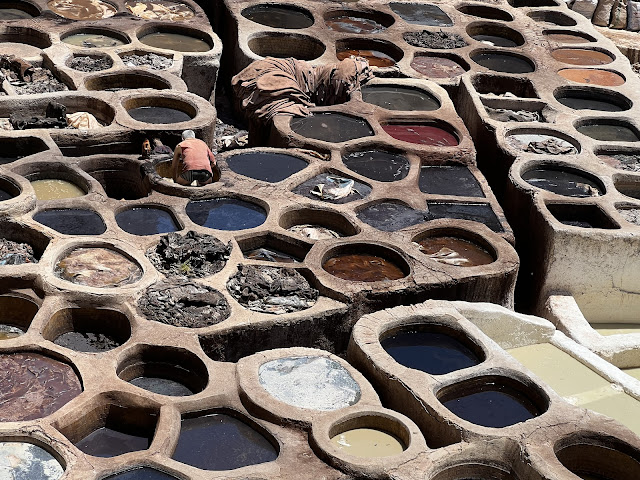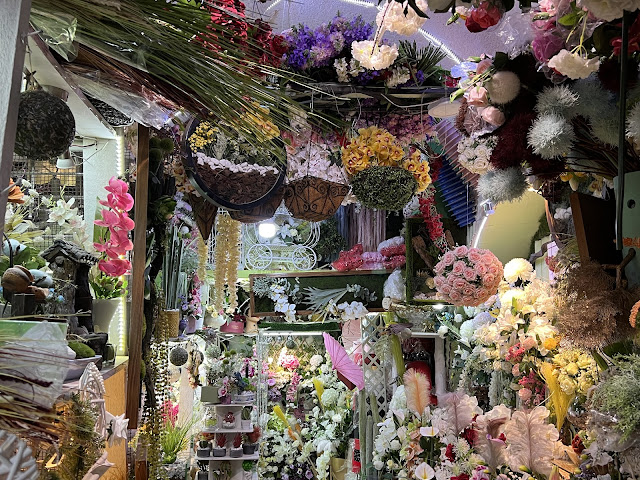 |
| The fossil factory we visited was fascinating. Here you see the detailed work as the ancient fossils are painstakingly brought out of the stone where they have been frozen in time for 320,000,000 years. |
 | ||
| Crynoids were embedded in this stone and slowly brought into relief. It will make a spectacular table top. In case you were wondering, we bought a new dining table for Rabelo. It isn’t anything like what you’re seeing here. It has a few ammonites and one other type of fossil scattered across the top.
|
 |
| We visited a divorced Berber woman living in the Arab community of Meknès-Tafilalet. She and her children are ostracized by the rest of the community. |
 |
| The maze we went through to enter the Berber’s home where we had tea and the opportunity to discuss her life. |
 |
| Entering the home of the Berber woman. She has many strikes against her making it difficult for her to live in this community of Arabs. Besides being divorced, and being a Berber, another issue they have with her is the fact that she allows OAT visitors into her home. |
 | ||
Inside the divorced Berber woman’s home. She did not want to have her face on Facebook. She had heard that people would use her face and put it on the body of a naked woman to post on Facebook.
|
 |
We were greeted by this band when we arrived at a hotel.  |
Tom and Bruce got into the rhythm of the music.
 |
| We saw a herd of camels as we were driving along and stopped for pictures. |
 |
| Ouarzazate-Tinghir…another photo stop |
 |
| The Miller family have always liked snakes. |








































































